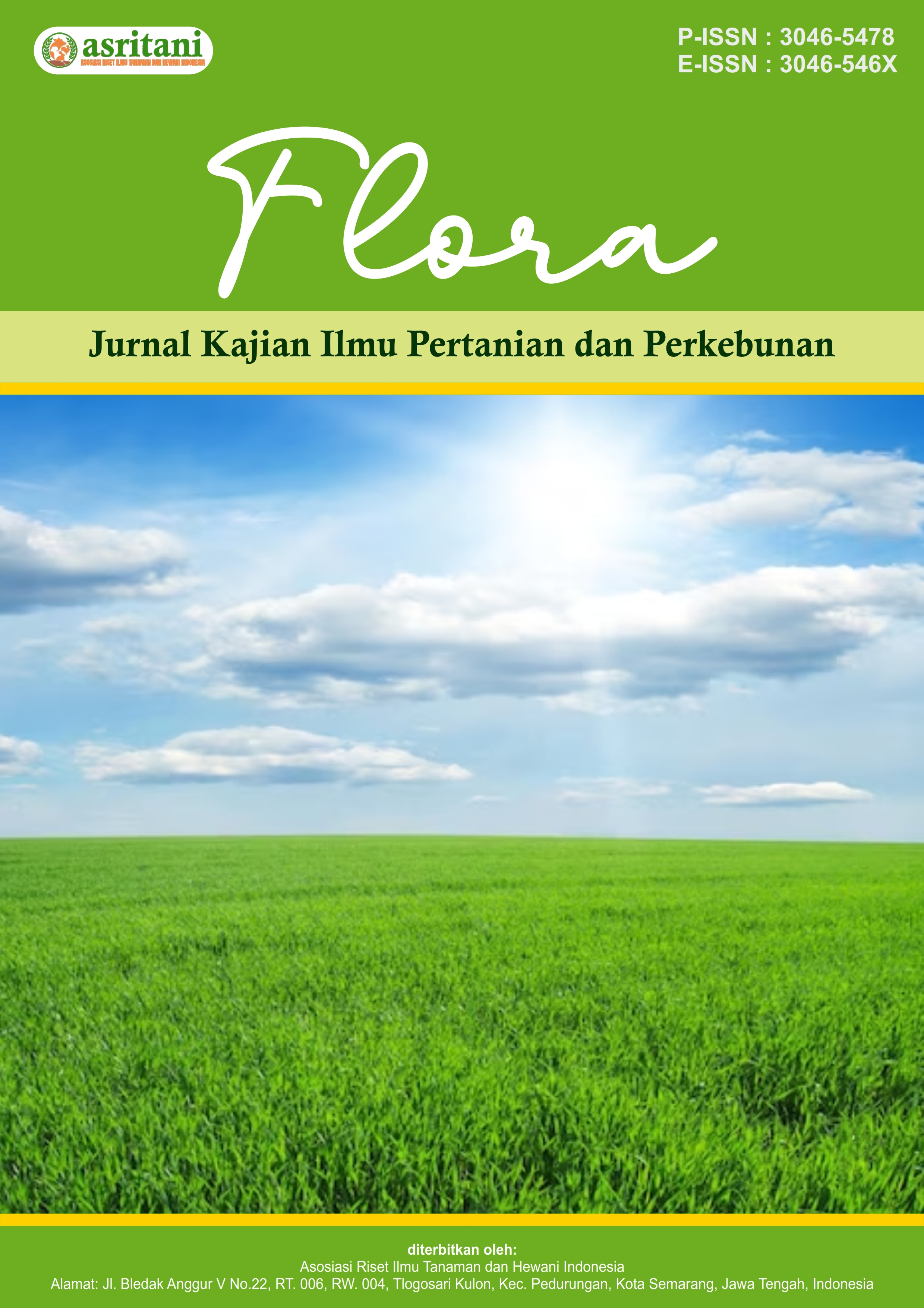Tradisi Pemanfaatan Tumbuhan sebagai Jamu Tradisional Pascamelahirkan di Kampung Sindangreret, Cibiru Bandung
DOI:
https://doi.org/10.62951/flora.v2i1.210Keywords:
Ethnobotany, Herbal Medicine, Use Value, Curcuma Longa, Zingiber OfficinaleAbstract
This study identifies nine plant species used as herbal remedies for postpartum recovery by young mothers in Sindangreret, Bandung. The UV (Use Value) for each plant varies, reflecting their relative importance in traditional practices. Curcuma longa exhibits the highest UV (0.58), highlighting its frequent use and perceived significance in traditional formulations for wound healing, reducing inflammation, and overall health enhancement. Other notable plants include Zingiber officinale (UV 0.51) for anti-inflammatory and energy-boosting properties, and Kaempferia galanga (UV 0.29) for pain relief and stamina enhancement. Traditional usage of these plants is supported by their bioactive compounds and therapeutic potential. The study underscores the importance of preserving ethnobotanical knowledge and suggests further scientific validation and public education to optimize the benefits of these herbal remedies.
References
Dewi, A., & Lestari, S. (2019). Ethnobotany of Sauropus androgynus in breastfeeding. Journal of Maternal Health, 11(3), 112-120.
Dewi, K. S., & Lestari, T. A. (2019). Fitokimia dan aplikasinya pada tanaman obat. Journal of Herbal Medicine, 8(3), 45-60.
Hartati, T., et al. (2022). The efficacy of Zingiber officinale in traditional medicine. Asian Journal of Herbal Medicine, 12(3), 45-55.
Hartati, W., et al. (2022). Formulasi jamu pasca melahirkan: Kajian kandungan bioaktif dan efektivitasnya. Journal of Traditional Medicine, 12(2), 89-98.
Islary, A., et al. (2020). Quantitative ethnobotany of medicinal plants used by indigenous communities in Assam, India. Journal of Ethnobiology and Ethnomedicine, 16(1), 1-16.
Martin, G. J. (2019). Ethnobotany: A methods manual. Routledge.
Misra, S., et al. (2023). Traditional medicinal plants: Applications and benefits. Springer.
Phillips, O., & Gentry, A. H. (1993). The useful plants of Tambopata, Peru: Statistical hypotheses tests with a new quantitative technique. Economic Botany, 47(1), 15-32.
Purwanto, R. (2020). Pemanfaatan herbal dalam kesehatan ibu. Universitas Indonesia Press.
Purwitasari, D., et al. (2020). Pengaruh temulawak pada kesehatan pencernaan pasca melahirkan. Journal of Herbal Sciences, 15(4), 120-130.
Purwitasari, R., et al. (2020). Pharmacological benefits of Kaempferia galanga in herbal medicine. Journal of Ethnopharmacology, 258, 112939.
Rahmawati, D., et al. (2022). The role of Cymbopogon citratus in stress reduction. Journal of Natural Remedies, 18(2), 67-74.
Rochmayanti, D., & Sudarmo, H. (2021). Jamu tradisional Indonesia: Etnobotani dan keberlanjutan.
Samuelsson, G., & Bohlin, L. (2020). Drugs of natural origin: A treatise of pharmacognosy. Taylor & Francis.
Sari, M., et al. (2021). Curcuma xanthorrhiza in liver health. Herbal Medicine Journal, 14(1), 88-93.
Setyawan, H., et al. (2021). Efek daun katuk pada produksi ASI: Sebuah ulasan sistematis. Indonesian Journal of Pharmacology, 11(1), 55-65.
Setyawan, R., et al. (2021). Carica papaya and its applications in wound healing. International Journal of Plant Science, 39(4), 123-130.
World Health Organization (WHO). (2022). Traditional medicine strategy 2014-2023. World Health Organization.
Yulia, R., et al. (2021). Cinnamon (Cinnamomum verum) for metabolic health. Current Perspectives in Natural Medicine, 10(2), 56-62.
Downloads
Published
How to Cite
Issue
Section
License
Copyright (c) 2024 Flora : Jurnal Kajian Ilmu Pertanian dan Perkebunan

This work is licensed under a Creative Commons Attribution-ShareAlike 4.0 International License.





